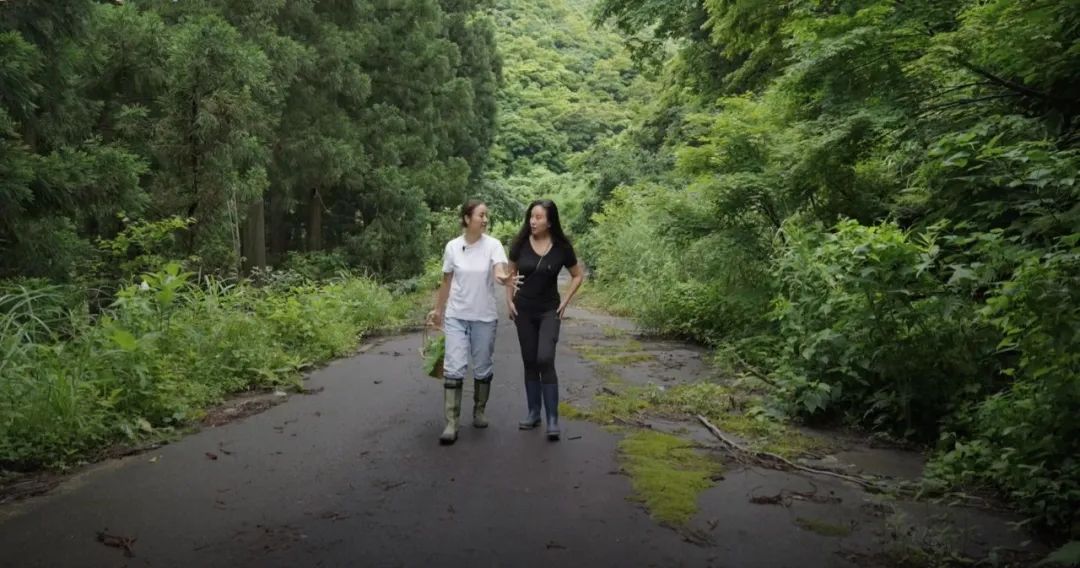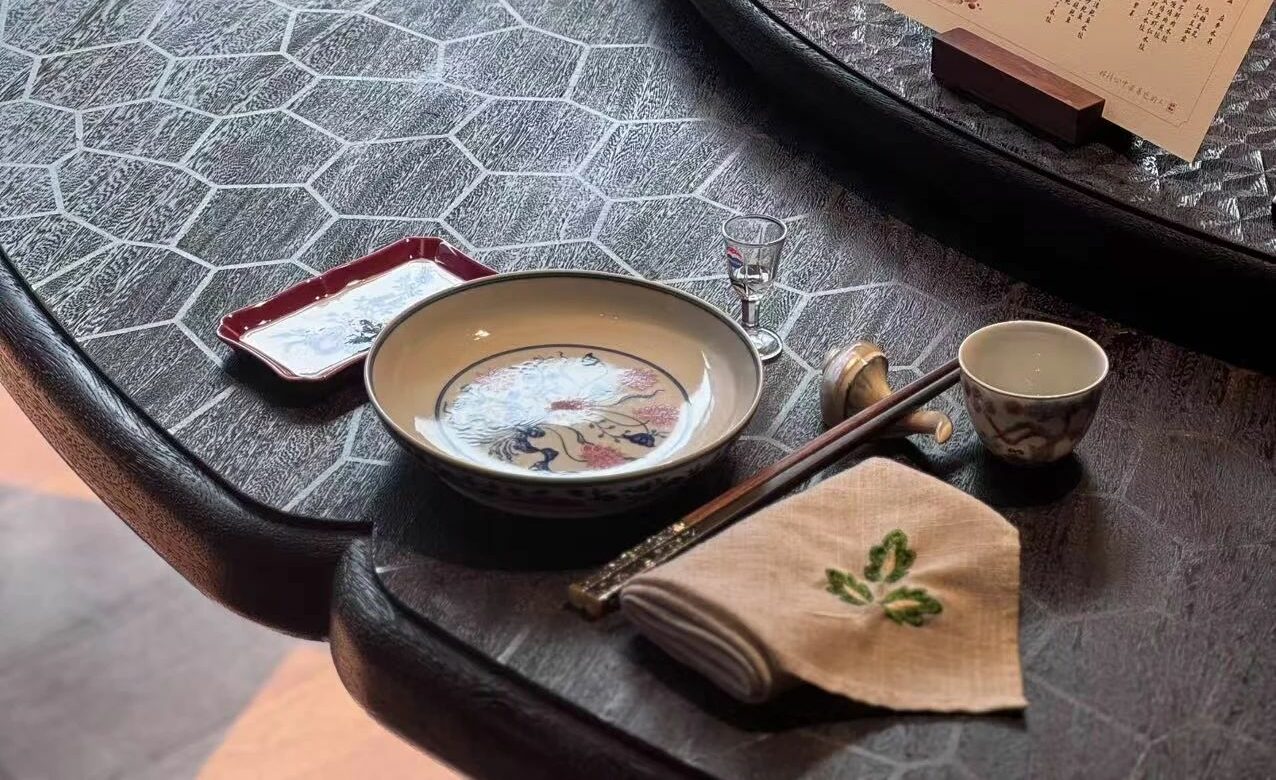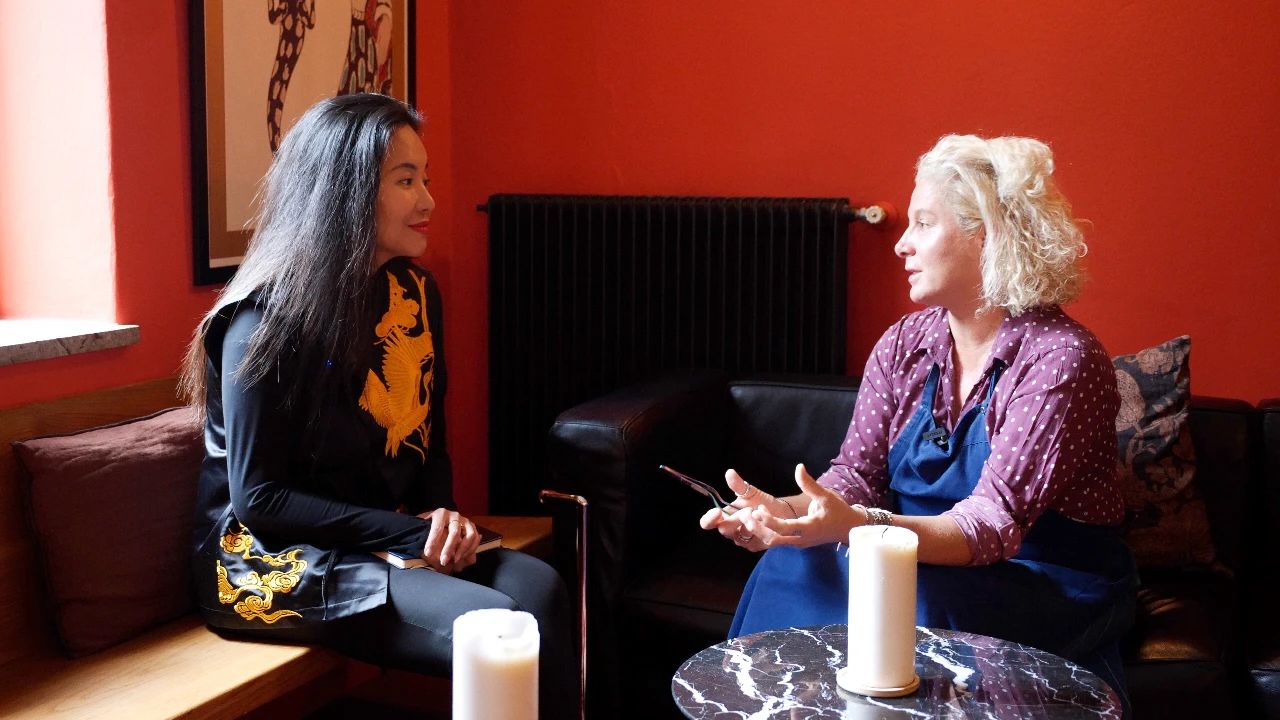This year, I came across a short documentary on YouTube called “Evolution of the Snow Country”, where a crisp, monochrome, ink-painting-like world created by winter snow that blankets Niigata looks the most impressive when the train passes through those tunnels. The Snow Country by Yasunari Kawabata describes precisely this ancient land – Niigata, especially the Uonuma region which is known as “the rice granary of Japan”. Uonuma produces a premium rice varietal, Koshihikari, the very finest white and glossy like pearls. For me, a rice enthusiast, it is an irreplaceable delicacy.
@Jocelyn華姐的TastyTrip
In the southern part of Uonuma, there exists a charming boutique hot spring hotel called Satoyama Jujo nestled in the foothills of Niigata. Each dish served here is imbued with a deep connection to the land, particularly those using Koshihikari rice, which has attracted many rice lovers. Built around the rustic framework of a magnificent 150-year-old Japanese farmhouse, the architecture has now been revitalized under new ownership. The Scandinavia-meets-Japan interior creates an elegant yet welcoming ambience.
Satoyama Jujo is not just a hotel, it’s an experience. Stepping inside, you’re not just indulging in delicious cuisine, but immersing in the rich tapestry of Japanese rural life. Toru Iwasa is a graduate of Musashino Art University and a pioneer of organic lifestyle. Even though his magazine Jiyujin has ceased publication, Satoyama Jujo continues his philosophy and becomes a beacon for a pastoral ideal of life.

The countryside is home to many fresh and organic ingredients but does not always have truly exceptional restaurants. Satoyama Jujo’s globe-trotting head chef, Keiko Kuwakino, spent many years exploring the world from Australia to Europe, from India to the Himalayas. Each place she went to becomes an inspiration for her cooking: the aromatic Australian herbs, the Indian yoga, the majestic Nepalese mountains… These experiences converged to create her unique culinary style. When Satoyama Jujo’s news popped up, she knew exactly where she should be heading.
Keiko has been at Satoyama Jujo since 2014 and took over as head chef in 2018. Her dishes mirror her own journey as a traveler. Diners won’t just be tasting the food, but feeling those cultures being connected and borders crossed.
 Keiko Kuwakino,instagram@keiko_kuwakino
Keiko Kuwakino,instagram@keiko_kuwakino
Keiko has been staying at Satoyama for almost ten years. For many people, this seems like an incredible amount of time. When asked about her feelings on this, she smiled and replied, “Really? I’ve never really thought about it. But now that you mention it, it is quite amazing that I have been here for ten years!” Her life as a chef has been filled with adventures and discoveries. In her younger years, she travelled around the world, an experience that deepened her understanding of health. “I have always been concerned about how to live a healthier life,” she shared. As a result, she delved into the study of yoga and even maintained a strict vegetarian diet for seven years.
 instagram@satoyamajujo
instagram@satoyamajujo
Recalling the time when the hotel was first opened, she says, “At that time, opening a hotel in the countryside was almost an adventure because very few people wanted to come here”. They tried to find more guests, but the situation was never good enough. Now, the hotel has become a first choice to stay for many travelers, including those from overseas. “Over the past decade, we have gone from zero to where we are now. For us, this is the best reward.” Currently, most of the visitors are from Tokyo and other cities in Japan, with a 30-40% from overseas since the borders have reopened. For a destination restaurant, this is quite significant.
Kuwakino feels closely connected to the land she treads on. For her, the pleasure of being able to pick up ingredients right from her own garden and cook them herself is unrivalled. “If I lived in the city, none of this would happen,” she shares. Her farm-to-table philosophy is not just a popular style of cooking, but an emotional and philosophical approach to food.

Kuwakino’s attitude towards food is one of reverence and appreciation. Each dish incorporates her respect for food and love for life. When asked about her cooking style, she responds, “My dishes are simple, but with sincerity and sophistication. They are grown from my own garden, bursting with life.” She is an avid explorer of ingredients, constantly collaborating and innovating with local farmers and producers. The restaurant earned a star in the Michelin Guide’s special Niigata edition and recognized on The Japan Times’ list of the country’s best destination restaurants.
This time I stayed for two nights. Although I am not a big fan of hot springs, I could truly unwind and relax even just by gazing at the distant mountains. There are several dishes that left a deep impression on me. The dish Bees’ Life features foamed honey mixed with bee pollen, paired with freshly picked herbs and flowers to awaken taste buds. While dining, rice is cooked in a clay pot over an open flame on the table. I particularly enjoyed the warm and heartfelt flavour of the white miso soup with mugwort mochi, myoga and watercress. At this point, a staff opened the clay pot and let me taste the texture of slightly uncooked rice. Another dish is whale fat with onions, adorned with marinated black pepper and sansho flower, rich and yet refreshing. Keiko mentioned that eating whale meat is a local tradition. The grilled turnip with grouper is also excellent. The meal naturally ends with rice and miso soup. Keiko has a unique perspective on cooking, believing that food is not just to satisfy hunger, but also serves as a way to express emotions and tell stories. In her restaurant, each dish has its own story, and every flavour is filled with emotion. The whale dish, for example, is not just a combination of flavours, but Kuwakino’s admiration and love for the ocean.

 Bee’s life,Honey (foam) and bee pollen
Bee’s life,Honey (foam) and bee pollen
Whale fat, onion Pickled black pepper pickled Sansho, peppers flower
@satoyamajujo
“Sometimes, farmers can offer unexpected suggestions, such as growing a new type of vegetable or trying out a special cooking tip. Working with them can help me discover new ingredients and cooking methods. It’s a two-way learning and exploration.” It was a memorable experience to accompany Kuwakino on an early morning forage for wild fruits and sansai (mountain vegetables). Her love for this place was evident. She is very different, though being a chef, as fame and fortune mean nothing to her.
“Whenever I go to a new place, I try the local food, ask locals about their cooking methods and if they’d like to teach me.” In this way, Chef Kuwakino mastered various techniques and incorporated them into her dishes. She has developed a deep, affective bond with this land and its people. How many people in this world can truly appreciate the stories behind food? Kuwakino is practicing her beliefs through real actions.
When I first arrived at Satoyama, I was captivated by the beautiful scenery, but even more so by Keiko’s cuisine and her stories. Here, I not only experienced delicious food but also a philosophy of life and a deep respect for food.
Tranquil and far-reaching, it is truly wonderful. Satoyama is a true luxury to me, where luxury does not mean extravagance and complexity. In today’s society, people often pursue novelty and trends, but this is a place of historical significance, a sanctuary for travelers. Here, I am deeply moved by the people living amidst the mountains and forests.
 The Author and Kuwakino Keiko
The Author and Kuwakino Keiko
Photo: satoyama-jujo.com、instagram@satoyamajujo、@keiko_kuwakino、Katherine Gu










